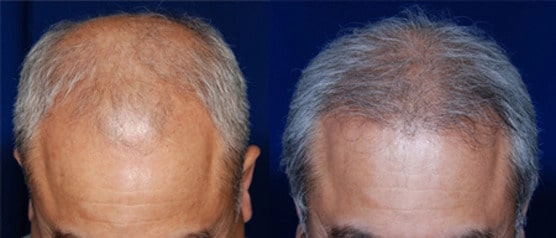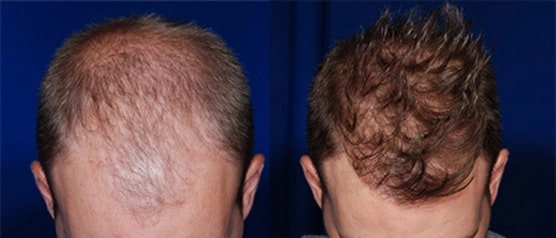Hair loss as a key player in lowering self-esteem and quality of life in men isn’t new. Even in ancient times, long, thick hair was a symbol of vitality and masculinity — and when your hair starts thinning, you start to become an image of debility and old age.
Modern science has fortunately provided an opportunity to treat hair loss by means of various hair restoration and transplant techniques. Thanks to these techniques, it’s easier than ever to regain a head full of hair, but selecting which treatment is best for your hair loss situation can be tricky.
Information is your friend. Comparing hair restoration VS hair transplant and identifying the different techniques under both is a good stepping stone to learning more about your choices for hair regrowth.

The Differences between Hair Restoration VS Hair Transplant
While both are effective in delivering their promise of slowing down hair loss and encouraging regrowth, there are significant differences between hair restoration and hair transplant — specifically, the method of how hair is replaced or grown.
Hair restoration utilizes oral and topical medication and therapy to stimulate hair growth, while hair transplant is more surgical and thus involves local anesthetic. The latter harvests hair follicles from where hair is thicker and implants them into the balding scalp area. FUT (Follicular Unit Transplant) and FUE (Follicular Unit Extraction) techniques fall under hair transplants.
Does Hair Restoration Actually Work?
Hair restoration medication, shampoos and conditioners, and therapy do work to treat pattern baldness and other related conditions, though effectiveness may be reliant on continued use. There are several FDA-approved medications to help reverse or decelerate thinning hair.
For major hair loss cases, it is recommended to seek a consult for a hair transplant procedure instead.
Choosing Between Hair Grafting VS Hair Transplant, FUT VS FUE
When considering taking the surgical route to treat baldness, you have the option to undergo either hair grafting or hair transplant — FUT and FUE, respectively. Both have pros and cons, but ultimately, they’re effective solutions for major hair loss cases. Doctors will recommend the appropriate hair loss solution depending on their patient’s needs and desired results.
About Hair Grafting / FUT
In a hair graft or FUT procedure, the surgeon excises a strip of the scalp’s skin to remove individual hair follicular units. These harvested follicles are then transplanted to where hair is thinning or missing.
The disadvantage of this method is that it leaves linear scarring due to the skin excision. It also requires a longer recovery period. However, the procedure offers the highest hair yield and is thus recommended for patients who need a significant number of grafts.
About Hair Transplant / FUE
The less invasive method between the two is FUE. It doesn’t require excising the skin — the surgeon can directly extract hair follicles and transplant them. As such, the lack of sutures and incisions doesn’t leave the same linear scarring as FUE and has a shorter recovery period.
It does, however, require shaving the donor area, and the overall process of follicular extraction requires more time.

Does transplanted hair fall out?
Not immediately after the surgery, but yes, it will happen. Transplanted hair follicles are meant to fall out as part of your hair’s natural lifecycle before regrowing permanent follicles.
Exceptional Hair Loss Solutions in Burbank, California
For intelligent hair loss solutions in the Burbank or Los Angeles Area, don’t hesitate to contact our team at Burbank Hair Transplant. Our treatments offer noticeable and long-lasting hair growth starting at six months. Schedule a free consultation today.


